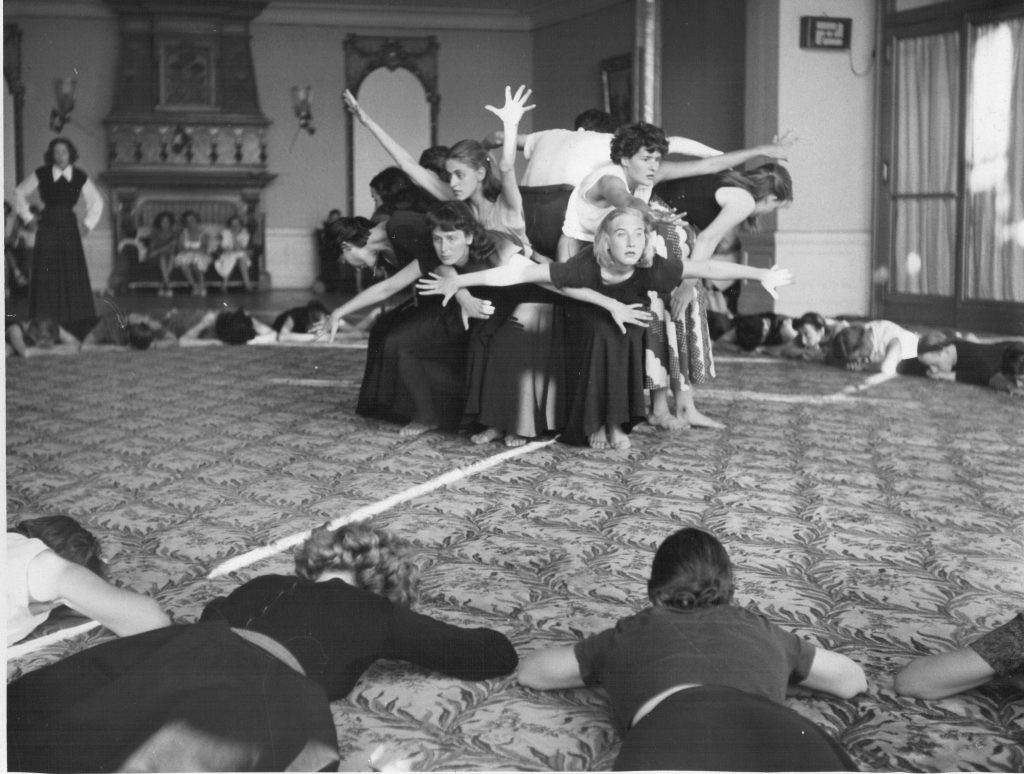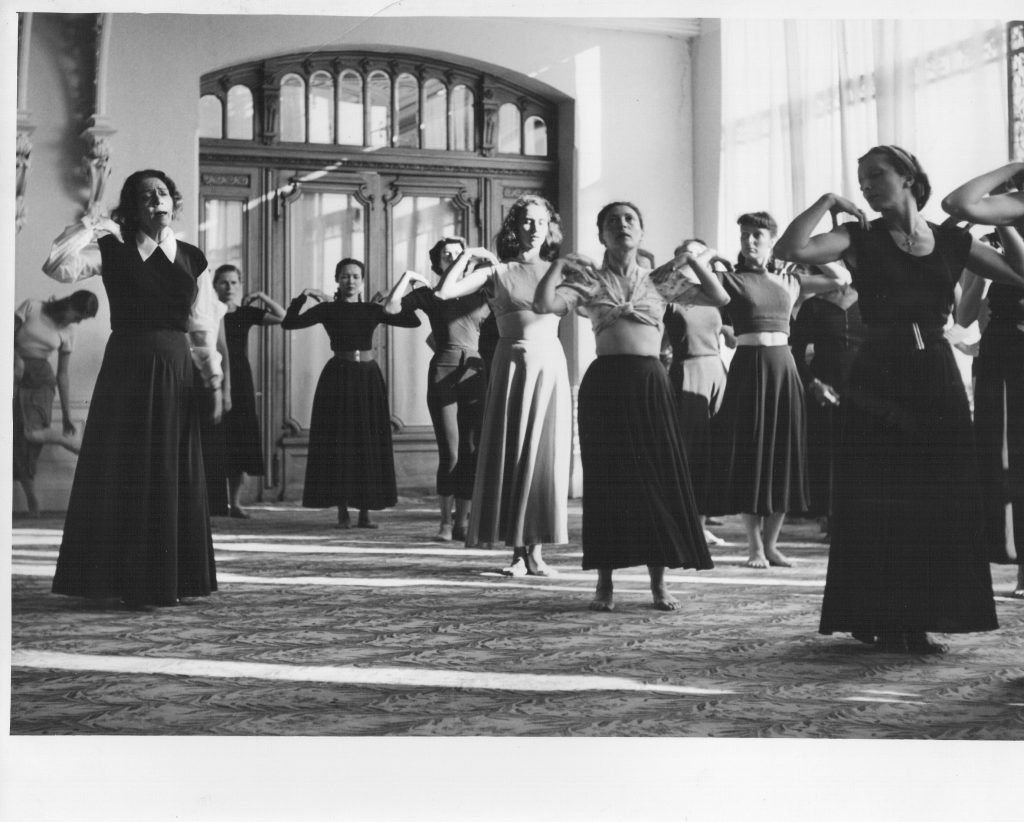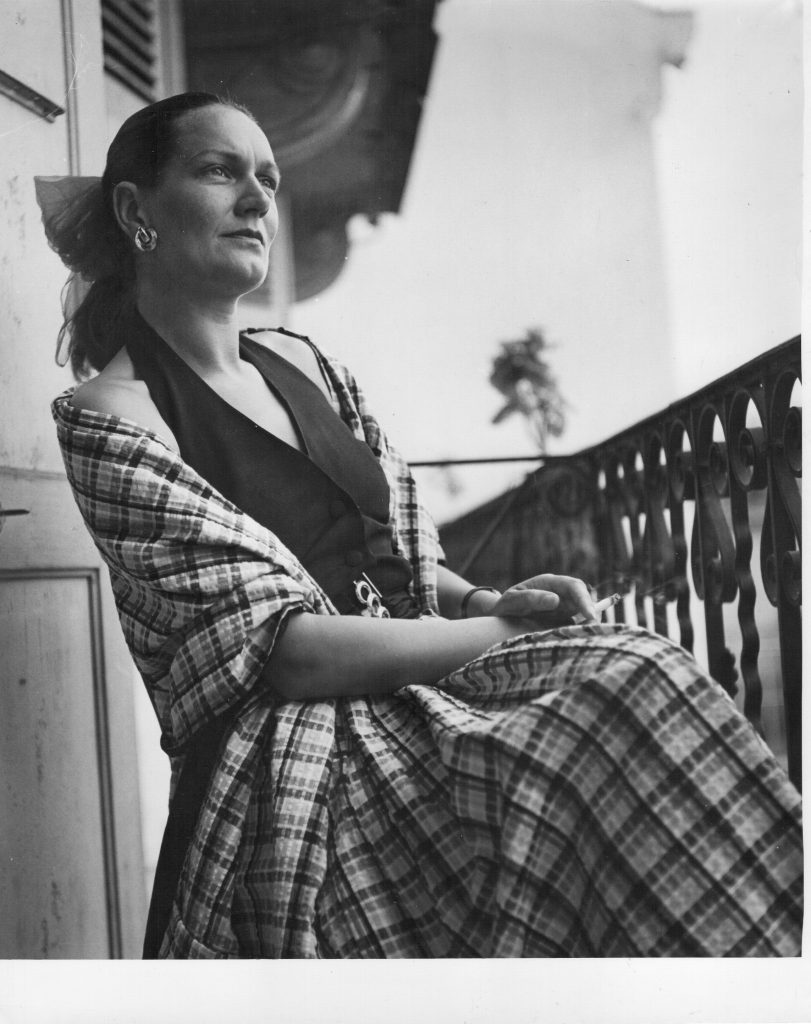
In modern dance, the American Martha Graham (1894-1991) comes to mind as the leader. But in Germany, the iconic name in contemporary dance was Mary Wigman (1886-1983), who studied under the Swiss teacher, Rudolf Laban. In 1919 she performed her first Expressionist Dance and in 1920 opened her dance school. Graham was introduced to the work of Wigman in the 1930s, around the time that the Nazis forbade Wigman to hire Jewish dancers and eventually forced her to close her school. Some dance historians claim her work somehow fit into Nazi popularism since she agreed with Harald Kreutzberg to perform on the 1936 Olympics opening day in the “Olympic Youth” festival. Martha Graham had refused the invitation, but surviving as an artist in Berlin caught Wigman in many difficult decisions.

Through the ballet dancer Nel Roos (1914-1970), whom she met socially in Frankfurt, Virginia met Wigman. Nel invited Virginia to accompany her to the Montreux Dance Congress in Montreaux, Switzerland, where Wigman held classes for American and European students, teaching her techniques. Virginia would become their official photographer and wrote an article in Dance Magazine about the Congress’s success. It was a gratifying time for Virginia to find some profit with her photography; however, consequently, Nel and Virginia developed a bond strong enough to strain her marriage. Eventually, Virginia relinquished their communication.
